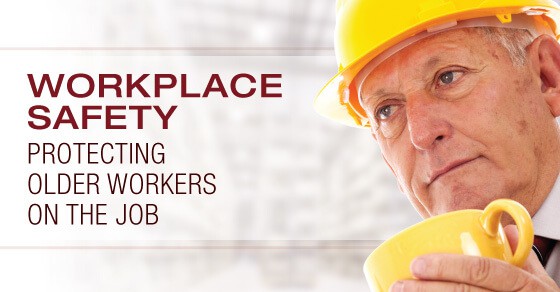
“Dying with your boots on” is a phrase most often associated with tales of the American West, suggesting a way of life that is alternately romantic and dangerous. But “dying with your boots on” takes on an entirely different meaning when you consider the thousands of workers who die on the job every year.
In 1970, Congress passed the Occupational Safety and Health Act, which created standards for workplace safety and has greatly reduced the number of workplace deaths since its passage. The Occupational Safety and Health Administration (OSHA), founded in 1971, has worked on both a state and national level to decrease workplace mortality rates by more than 66% in the four decades since the Act was passed.
Who is most likely to die on the job?
Even though the worker mortality rate, thanks to federal laws and regulations, has continued to fall each year, there is one age group for whom the reverse is true: workers 65+. Workers in this age group are nearly three times more likely to die on the job than any other age group. And it’s a growing issue: more than a quarter (26.8%) of the U.S. workforce in 2012 was in the 65-74 age range, and the Bureau of Labor Statistics predicts that by 2022, that percentage will increase to 31.9%.
This statistic is the result of a simple formula: workers continue to work long after traditional retirement age, and the process of aging makes them more vulnerable to injury and death on the job.
The value of older workers in the workplace
There is no doubt that the workforce is graying; with life expectancies now at 20 years past traditional retirement age, many older workers are opting to stay in the workforce. For some, working is a way to remain active, engaged, and productive. For others, retirement simply isn’t an option.
Employers benefit from having older workers on staff in numerous ways. Older workers bring maturity and experience to the day-to-day operation of a business, and their knowledge and skills can be particularly helpful in mentoring younger colleagues.
Smart employers who seek out and retain older workers receive distinct advantages for their foresight:
- Company loyalty
- Dedication to job responsibilities
- Strong work ethic
- Commitment to company vision
- Professionalism
- Established skill set
- Reduced need for training and supervision
Still, for all of the positives older workers bring to the table, businesses must consider adaptations to accommodate the needs brought on by aging.
The most dangerous fields for older workers
Older workers can be found in practically every industry, but there are some fields that require agility, quick reaction and response, and sharpened senses – attributes that diminish as a person ages. The construction industry is one such field, as is the transportation industry. While both present varying degrees of danger to workers regardless of age, older workers in particular can be vulnerable to hazards that are inherent to the job.
How employers can protect older workers
So how do employers protect older workers on the job, regardless of industry? To get the full advantage of an older worker’s considerable knowledge and skillset, companies can:
- Adapt job responsibilities to fit employee needs and ability
- Improve the physical work environment through additional safety precautions
- Alter tasks to reduce repetitive motion injuries
- Offer flexible work schedules, job sharing, or reduced hours
- Provide workplace enhancements such as improved lighting and volume-adjustable telephone equipment
- Retrain workers, both for other positions within the company as well as for tasks within their current position
Older workers are a valuable resource in today’s business world, and companies would be wise to adapt in order to get the full advantage of their expertise. As the workplace continues to gray in the coming years, older workers will pass on the knowledge and skills that have helped to build successful businesses across all industries. And while workplace safety accommodations may benefit older workers, up-and-coming younger workers will benefit from them, as well.
